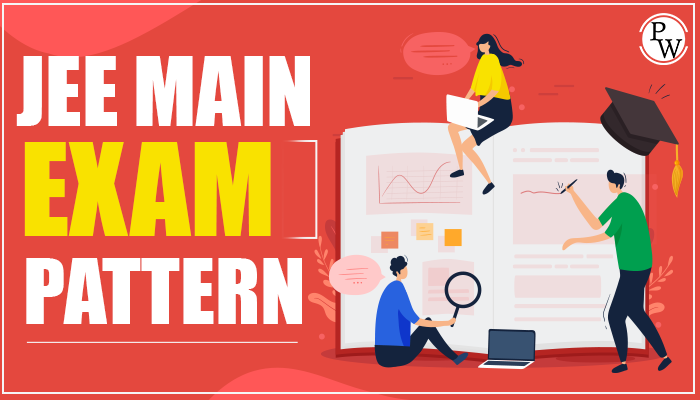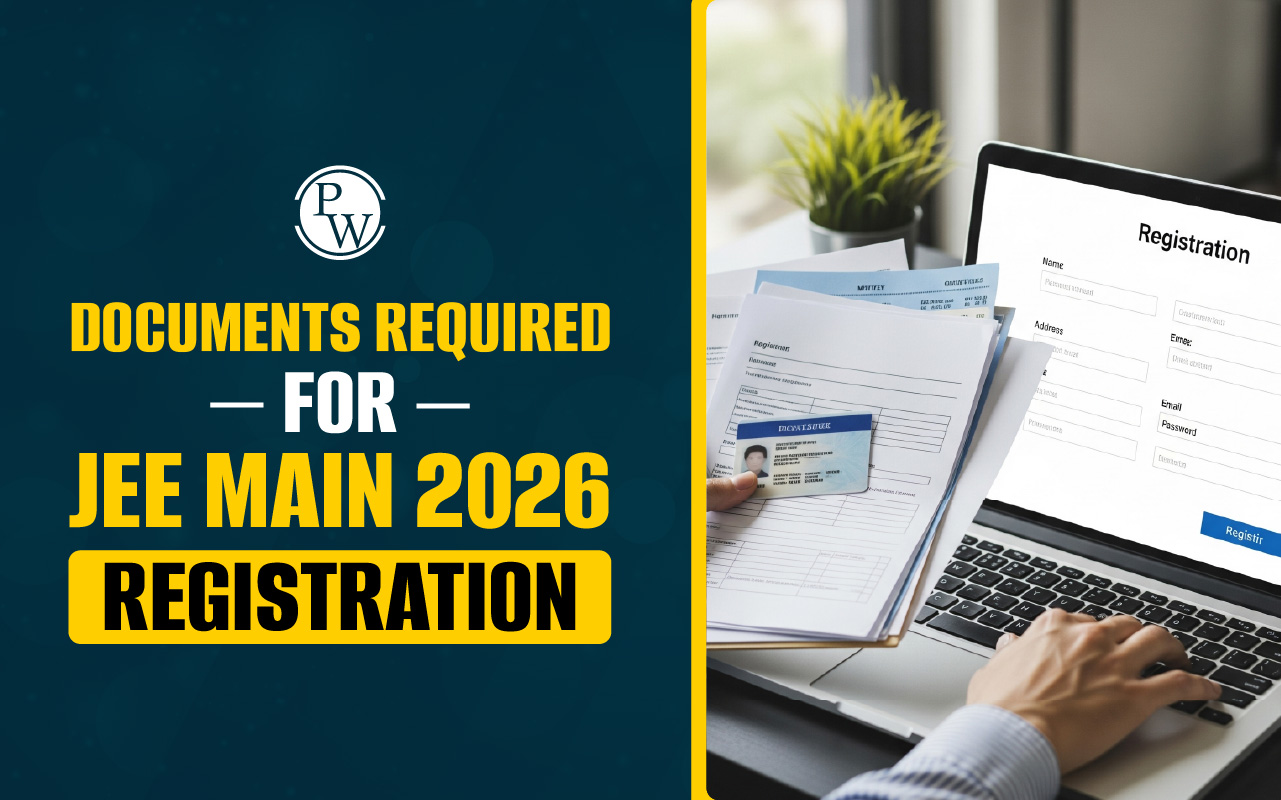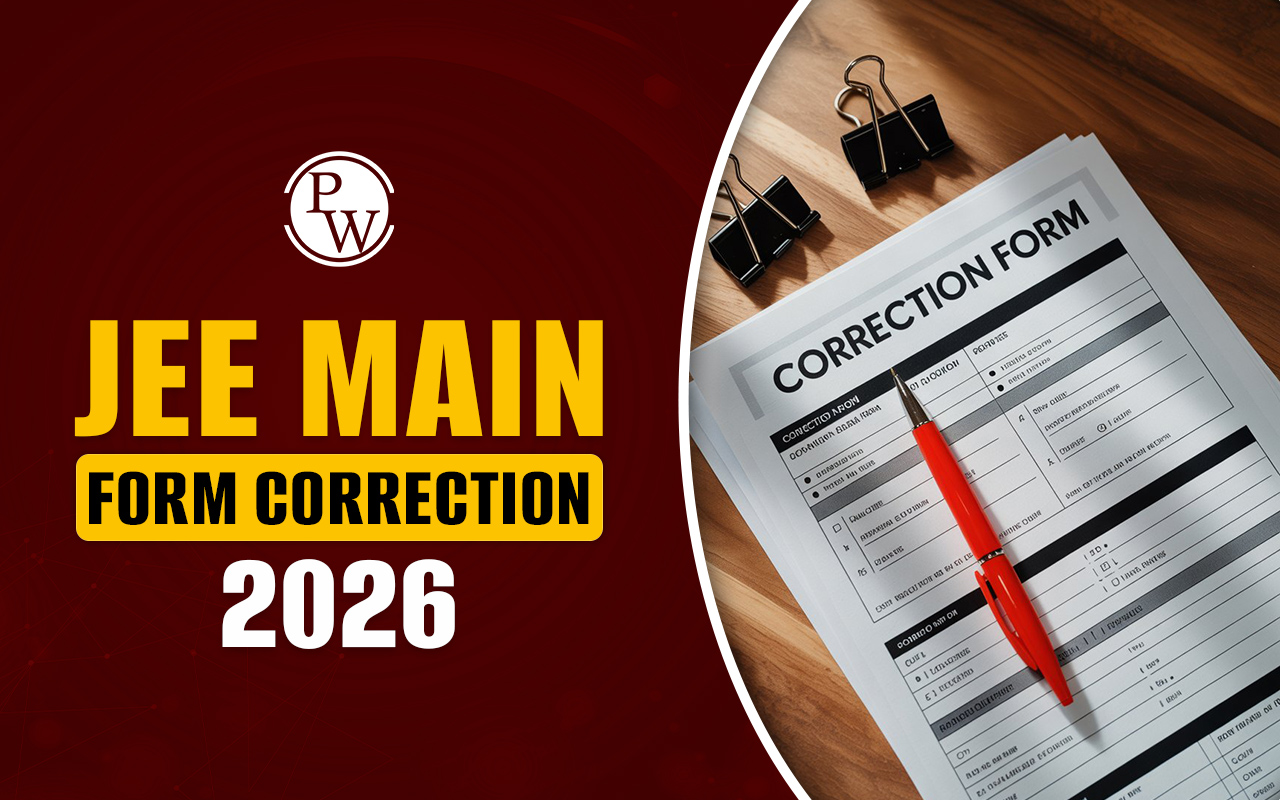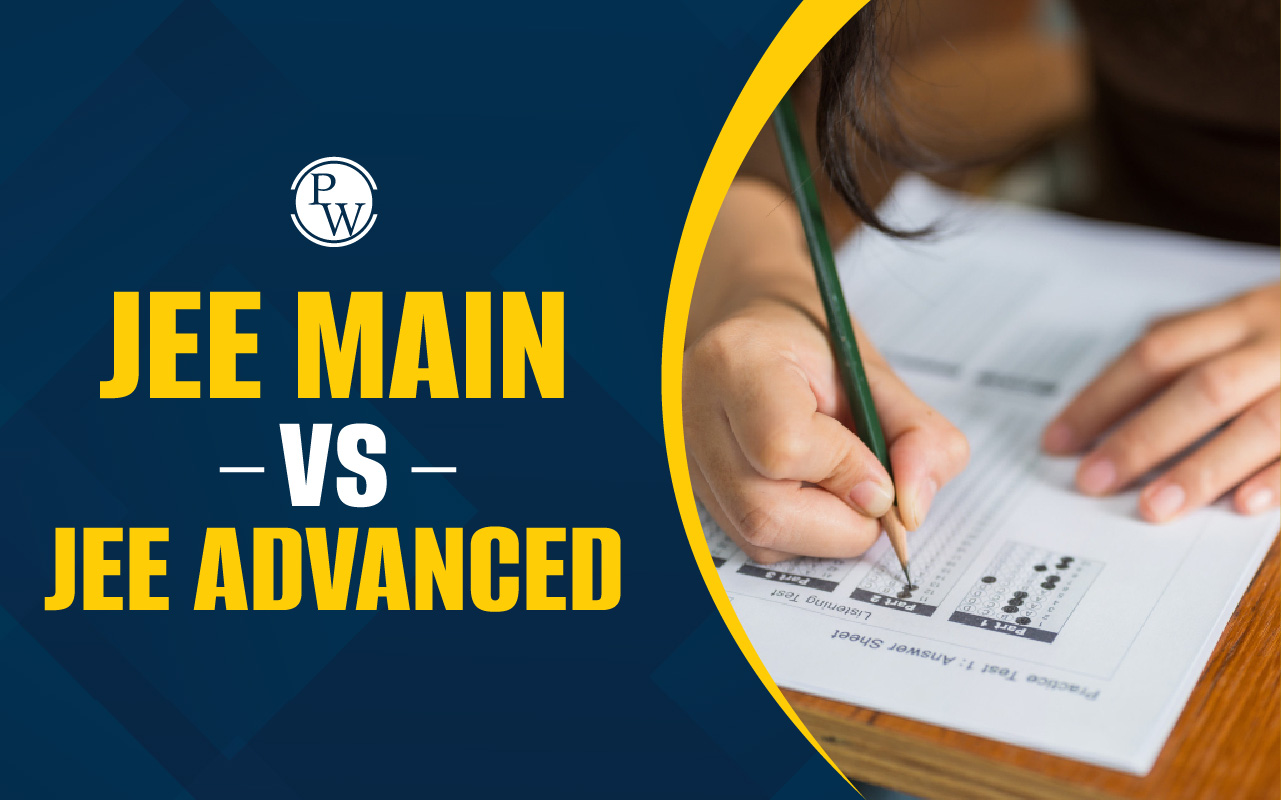

JEE Main Exam Pattern 2026 is expected to follow a structure similar to the previous year, with some important updates. While the official notification is awaited, candidates can refer to the JEE Mains pattern of 2025 for preparation. The examination will be conducted in three distinct papers: B.E./B. Tech (Paper 1), B.Arch (Paper 2A), and B.Planning (Paper 2B). The JEE Mains pattern for 2026 is expected to feature a mix of multiple-choice and numerical value-type questions across various subjects.
The total marks in JEE Mains 2026 for Paper 1 are expected to be 300, while Papers 2A and 2B may carry 400 marks each. If trends continue, the JEE total marks and number of questions in JEE Mains 2026 will remain similar to last year’s pattern, where candidates often asked, "How many questions are there in JEE Mains 2025?"—the answer being 75 for B.Tech. Understanding the JEE main marking scheme and JEE marks distribution is important for focused preparation.
Also Check:
JEE Main Exam Pattern 2026 Overview
The official JEE Main exam pattern for 2026 is yet to be announced by the National Testing Agency (NTA). However, based on the JEE paper pattern of 2025, the structure is expected to remain largely similar. Until an official announcement is made, aspirants are advised to prepare using the previous year’s JEE main paper pattern.
There will likely be three separate papers in JEE Main 2026:
-
Paper 1: B.E./B.Tech
-
Paper 2A: B.Arch
-
Paper 2B: B.Plan
The exam will be conducted in Computer-Based Test (CBT) mode, except for the Drawing section in B.Arch, which will be held in pen-and-paper mode. For JEE Main 2026, the total no of questions in JEE mains for Paper 1 is anticipated to be 75, with total marks of 300, while Papers 2A and 2B are expected to carry 400 marks each. Knowing the JEE Mains total questions and the structure of each paper helps aspirants set focused preparation goals.
Also check: JEE Main Previous Year Question Papers
JEE Main Exam Pattern for Paper 1 B.Tech/B.E.
JEE Main 2026 Paper 1 will be held for candidates seeking admission to B.E./B.Tech programmes. The question paper will include Physics, Chemistry, and Mathematics, with equal weightage given to each subject.
The exam is expected to follow a similar structure to the JEE Main Exam Pattern 2025, particularly in terms of subjects covered, number of questions in JEE Main, and JEE marks distribution. Candidates can check the table below for the expected JEE Main paper pattern for B.Tech/B.E.
|
Exam Pattern for JEE Main 2026 Paper 1 (B.Tech/B.E.) |
|
|
Particulars |
BTech/BE |
|
Mode of Examination |
Computer-Based Test (CBT) |
|
JEE Main exam duration |
For Non-PwD/PwBD Candidates- 03 hours (180 minutes) Candidates (who are eligible for scribe)-04 hours |
|
Language of Examination |
English, Hindi, Assamese, Bengali, Gujarati, Kannada, Malayalam, Marathi, Odia, Punjabi, Tamil, Telugu, and Urdu` |
|
Type of Questions |
Objective Type - Multiple Choice Questions (MCQs) and Questions for which the answer is a numerical value, with equal weightage to Mathematics, Physics, and Chemistry |
|
Number of sections and subjects |
3 (Physics, Chemistry, and Mathematics) |
|
JEE Main Total Questions |
75 (25 each from Physics, Chemistry, Maths) |
|
JEE Main Total Marks |
300 (100 per subject) |
|
Question Type |
Section A- MCQs (Multiple-Choice Questions) |
|
Questions per Subject |
Section A- 20 |
|
JEE Main Marking Scheme |
Each question carries 4 marks |
|
JEE Main Negative Marking |
There will be negative marking for incorrect answers in Sections A and B. |
Enroll now for JEE Online Courses by PW
JEE Main Exam Pattern for Paper 2 B.Arch & B.Plan
Students aspiring to take the B.Arch and B.Planning entrance examinations can look back at last year's pattern for cues. Among the important changes made last year was the elimination of the optional questions in Section B. While earlier the candidates had the option of solving 5 out of 10, they are now given 5 questions and all 5 are compulsory. JEE Main 2026 Paper 2 will probably be held online, except for the drawing part in the B.Arch paper, which will probably be held offline. The following tables represent last year's exam pattern, question distribution, JEE Main total questions, and the marking scheme for JEE Main Question Paper 2.
|
JEE Main 2026 Exam Pattern for Paper 2 (B.Arch & B.Plan) |
|
|
Particulars |
Details |
|
Mode of Exam |
Computer-based examination, except for the Drawing section in B.Arch (Pen & Paper-based mode) |
|
Language |
English, Hindi, Assamese, Bengali, Gujarati, Kannada, Marathi, Malayalam, Odia, Punjabi, Tamil, Telugu, and Urdu |
|
Exam Duration |
For Non-PwD/PwBD Candidates- 03 hours (180 minutes) Candidates (who are eligible for scribe)-04 hours |
|
No. of Sections |
B.Arch (Paper 2A): • Part 1 - Mathematics • Part 2 - Aptitude test • Part 3 - Drawing test B.Plan (Paper 2B): • Mathematics • Aptitude test • Planning test (MCQs) |
|
Type of Questions |
B.Arch: • Mathematics: MCQs and Questions for which the answer is a numerical value • Aptitude: Multiple-choice questions(Objective Type) • Drawing: Drawing aptitude B.Planning: • Mathematics: MCQs and Questions for which the answer is a numerical value • Aptitude: MCQs(Objective Type) • Planning: MCQs(Objective Type) |
|
JEE Mains Total Questions |
• B.Arch: 77 Questions Part I: Mathematics-20 (Section A) and 05 (Section B) Part II: Aptitude test- 50 Part III: Drawing Test-02 • B.Plan: 100 Questions Part-I: Mathematics-20 (Section A) and 05 (Section B) Part-II: Aptitude Test-50 Part-III: Planning- 25 |
|
Total Marks |
Paper 2A: 400 Marks Paper 2B: 400 Marks |
|
JEE Mains Marking Scheme |
• MCQs: +4 marks for a right answer, -1 mark for a wrong one. • Numerical value answers: +4 marks for a correct answer, -1 mark for a wrong answer. • Drawing Test: There are 2 questions, and both are checked out of 100 marks. |
How Many Attempts Are Allowed for JEE Main 2026
Subject-Wise Question Distribution in JEE Main 2026
JEE Main 2026 will be conducted as three distinct papers, each tailored for admission to B.Tech, B.Arch, and B.Plan programmes respectively. Each paper will have a different total number of questions, and candidates often ask how many questions are there in JEE Mains 2025, which can help them estimate the total questions in JEE Mains 2026 more accurately. The subject-wise distribution of questions for each paper is provided below.
Total Questions in JEE Mains Paper-1 (BTech)
NTA is conducting Paper 1 of JEE Main for BTech admissions. It is supposed to contain a total of 90 questions. You can refer to the table below for an overview of the expected number of questions in JEE Main 2026 Paper 1 (B.Tech).
|
Total Questions in JEE Mains Paper-1 (BTech) |
|||
|
Subject |
Section A |
Section B |
Marks |
|
Mathematics |
20 |
05 |
100 |
|
Physics |
20 |
05 |
100 |
|
Chemistry |
20 |
05 |
100 |
|
Total |
75 |
300 |
|
Total Questions in JEE Mains Paper-2A (BArch)
JEE Main Paper-2A is to be carried out by the NTA for admissions to B.Arch, will consist of approximately 90 questions in total. The paper would examine the candidates on Mathematics, Aptitude, and Drawing in general. If you wish, you can go through the provided table for a better sectional question breakup of what is expected in it.
|
Total Questions in JEE Mains Paper-2A (BArch) |
|||
|
Question Paper Design |
Subject |
Number of Questions |
Marks |
|
Subject-wise distribution of Questions, Total Number of Questions, and Marks |
Part I: Mathematics |
20 (Section A) and 05 (Section B) |
100 |
|
Part II: Aptitude test |
50 |
200 |
|
|
Part III: Drawing Test |
02 |
100 |
|
|
Total |
77 |
400 |
|
Total Questions in JEE Mains Paper-2B (BPlan)
NTA has announced that JEE Main Paper 2B, conducted for admission to the B.Planning course, will consist of approximately 90 questions. These questions are expected to be divided among three sections: Mathematics, Aptitude, and Planning. The table below provides an estimated subject-wise distribution of questions.
|
Total Questions in JEE Mains Paper-2B (BPlan) |
|||
|
Question Paper Design |
Subject |
Number of Questions |
Marks |
|
Subject-wise distribution of Questions, Total |
Part I: Mathematics |
20 (Section A) and 05 (Section B) |
100 |
|
Number of Questions, and Marks |
Part II: Aptitude Test |
50 |
200 |
|
Part III: Planning |
02 |
100 |
|
|
Total |
100 |
400 |
|
Marking Scheme in JEE Main Exam Pattern 2026
The format of last year mentioned the overall marks and section-wise marks for the BE/BTech (Paper 1) exam, which carried a total of 300 marks. The new pattern will give important information like the duration of the exam, marking scheme, number of questions, and subject-wise coverage. According to the old format, the exam contained a total of 90 questions, each subject having 20 multiple-choice questions and 5 numerical value-based questions.
|
Marking Scheme in JEE Main Exam Pattern 2026 |
|||
|
Particulars |
BE/BTech Marking Scheme |
BArch Marking Scheme |
BPlan Marking Scheme |
|
Correct Answer |
+4 marks awarded |
+4 marks awarded |
+4 marks awarded |
|
Incorrect Answer |
-1 mark deducted |
-1 mark deducted |
-1 mark deducted |
|
Un-attempted Question |
0 marks (No deduction) |
0 marks (No deduction) |
0 marks (No deduction) |
|
Subjects & Marks per Section
|
Mathematics: 25 questions X 4 marks = 100 marks Physics: 25 questions X 4 marks = 100 marks Chemistry: 25 questions X 4 marks = 100 marks |
Mathematics: 25 questions X 4 marks = 100 marks Aptitude Test: 50 questions X 4 marks = 200 marks Drawing test: 2 questions X 50 marks = 100 marks |
Mathematics: 25 questions X 4 marks = 100 marks Aptitude Test = 50 questions X 4 marks = 200 marks Planning Based Questions = 25 X 4 marks = 100 marks |
JEE Main Exam Mode and Language Options
The JEE mains exam pattern includes conducting the exam mainly as a Computer-Based Test (CBT), except the drawing section in B.Arch, which is pen-and-paper.
The exam will be held in 13 regional languages across the country.
- English
- Hindi
- Assamese
- Bengali
- Gujarati
- Kannada
- Malayalam
- Marathi
- Odia
- Punjabi
- Tamil
- Telugu
- Urdu
This multi-language support helps ensure that candidates from different linguistic backgrounds can attempt the paper comfortably.
Changes in JEE Main Exam Pattern from the Previous Year
JEE Main 2026 introduces an important update in Section B of each subject. According to the official notice released by the National Testing Agency (NTA) on 17 October 2024, the option to choose 5 out of 10 numerical questions in Section B has been removed starting from JEE Main 2025.
What’s New in Section B?
-
Section B will consist of just 5 numerical answer type questions.
-
All 5 questions will be compulsory,
-
No internal choice will be provided.
This change applies to:
-
Paper 1 (B.E./B.Tech)
-
Paper 2A (B.Arch)
-
Paper 2B (B.Plan)
This change signifies a return to the pre-COVID exam structure, where no optional numerical questions were offered. As a result, candidates must now prepare all numerical questions thoroughly. The complete and official JEE Main 2026 exam pattern will be detailed in the upcoming Information Bulletin.
JEE Main Exam Pattern 2026 FAQs
How many questions are there in JEE Mains 2025 for BTech?
What is the total marks of JEE Mains in 2026?
Has the exam pattern changed from JEE Main 2025?
What is the exam pattern for JEE Main 2026 for B.Arch and B.Plan papers?
Will the number of questions in JEE Main 2026 remain unchanged from the previous year?
What is JEE main exam pattern for question types?
How many sections are there in JEE mains and what subjects do they cover?












